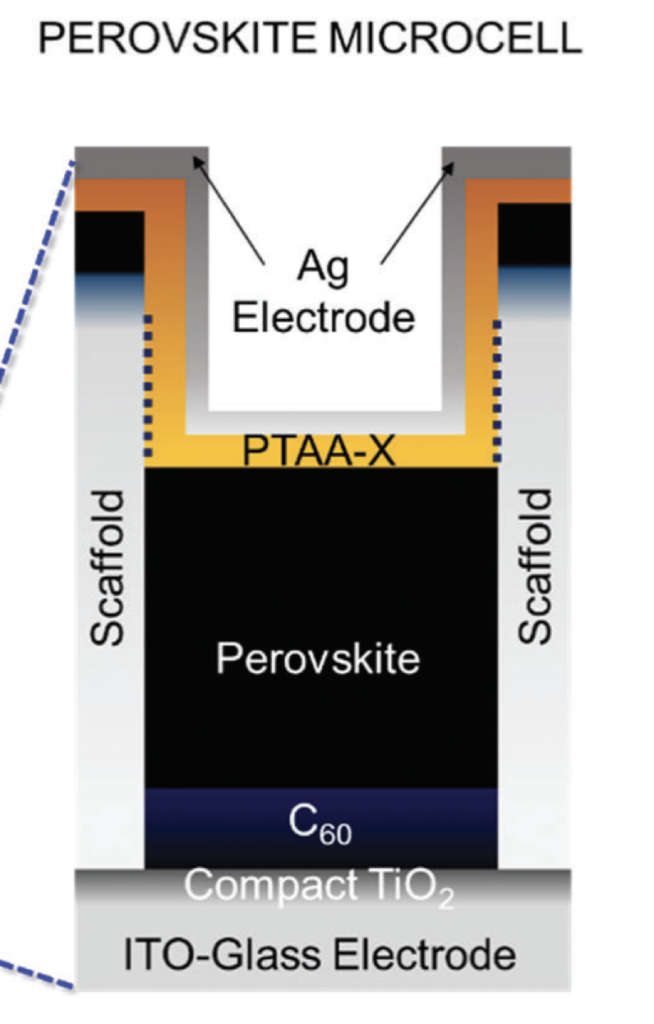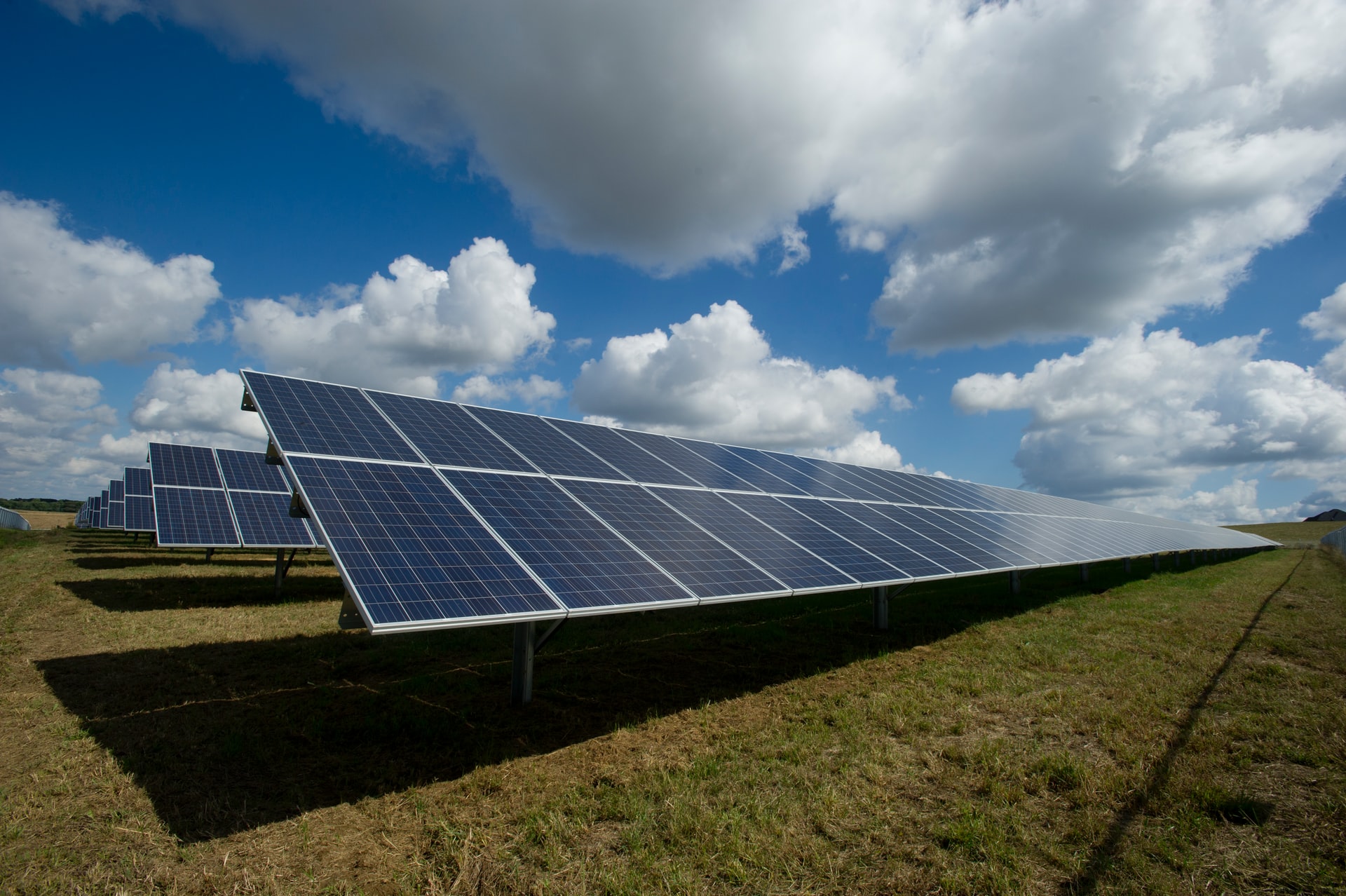
Author: Advait Harish Shirbhayye
Hiranandani Foundation School
December, 2020
Introduction
It is no secret that aircraft are gas guzzlers. They account for nearly 3% of the total C02 emissions in the United States, although not many can complain about this, as air travel is indispensable. However, what we can do is use our advances in science and technology paired with our innate curiosity, to solve this pressing issue.
Historically, there has been a lot of research regarding the use of silicon and gallium arsenide solar cells to power aircraft, however Perovskite Solar Cells (PSCs) have been a rather recent innovation, so minimal research has been conducted in that regard. In this article, I shall discuss everything from the basics of PSCs to their potential applications in aircraft.
Basics of PSCs

When light (photons) strikes the perovskite layer, the energy of the photons energizes the electrons, thus imparting kinetic energy. This kinetic energy enables the conduction of electrons in the electron transport layer (ETL) (See fig.2). However, something interesting happens. When an electron ‘moves’ up to the ETL and conduction band, it leaves a gap in its original position. This gap is filled by a particle called a ‘hole’. Holes essentially have the opposite charge to an electron. The concept of holes stems from the Law of Conservation of Charge. The holes then migrate to the Hole Transport Layer (HTL) (See Fig.2). The electron-hole pairs generated are conductive, so they can move about in their respective layers, and moving charges produce electricity. This is the basic principle of a solar cell.

https://www.ossila.com/pages/perovskites-and-perovskite-solar-cells-an-introduction
The mesoporous Tio2 layer is engineered such that the perovskite material can be drawn into it, which increases the surface area for photon absorption, thus increasing the efficiency. The optimal thickness for PSCs is in the ballpark range of 500nm (which is almost 50X thinner than a human hair!).
Desirable properties of PSCs which make them ideal to power aircraft
PSCs are flexible and mechanically durable. This is the single most important property of a PSC, as it can withstand the stresses of flight. Research conducted into using PSCs as a wearable source of energy quantified the mechanical durability of PSCs. The researchers conducted numerous bending cycles and analyzed FEM simulations. These are the strategies they used to make PSC’s flexible which are published in the Royal Society of Chemistry Journal (Citation: Energy Environ. Sci., 2019, 12, 3182):
- They introduced a parylene protective layer on top of the PSC, which protected the perovskite layer from scratching, contamination, etc. and shifted the neutral plane (NP) to the photon absorbing and mechanically unstable perovskite layer (See Fig.3). A neutral plane is essentially the plane where the strain is zero, as the compression and tension of bending is balanced out. Thus, shifting the NP to the mechanically sensitive layer is desirable, as no strain would be experienced.
- Bending can reduce the conductive power of a PSC, so to find the optimal tradeoff, a gold metal mesh was introduced.

Fig. 3 (Citation: Energy Environ. Sci., 2019, 12, 3182)
In separate research, a scaffold like structure was designed to be placed within the mechanically fragile perovskite layer, to internally reinforce the layer (See Fig.4). This ‘honeycomb’ structure divides the layer into different grids, thus isolating defects to one grid area only, and the mechanical durability imparted makes the cell resistant to the mechanically harsh environment of flight.

Fig. 4 (Citation: Energy Environ. Sci., 2017, 10, 2500)
Fig. 5 shows a magnified section of a microcell within the honeycomb structure. As you can see, there is a continuous point of contact between the perovskite material and the scaffold wall. Since there is contact, adhesion must prevail, i.e. the two materials must be ‘glued’ together. This can be achieved by mechanical interlocking, that is the static friction between the two layers. Mechanical interlocking can be enhanced by increasing the roughness between the two surfaces.

However, a new way to increase adhesion we researched is the use of organosilicate. In a nutshell, organosilicate is a good adhesive. It also possesses extra durability as organosilicate has Si (silicon) bonded to the classic organic compound C-C bonds. Organosilicate is also a good diffusion barrier. Perovskite is highly sensitive to moisture, so organosilicate could also act as a good protective barrier/layer. These qualities make organosilicate promising for use in PSC powered aircraft.
You may have realized that a C60 layer has been added below the perovskite layer in Fig.4. But why? This has to do with the inherent salt-like weak nature of perovskite.

As you can see in the figure above, the structure of perovskite has many gaps/defects. These make the material fragile and the solar cell loses efficiency. Thus, to correct this, C60 (fullerene) acts as a defect filler by filling in the gaps.
On a side note, graphene is an exciting innovation that could be used to make the grid structure discussed above. Although graphene is difficult to control and harness at this stage, new research emerges every day that makes the mechanical use of graphene inch closer to us. In fact, researchers from the University of Texas at Austin discovered that by limiting the oxygen during graphene crystal growth, much larger crystals can be obtained, which could have potential uses in flexible electronics.
Can PSCs power aircraft?
Now that we have discussed the properties and mechanics of PSCs, we can move forward to the actual integration of PSCs into aircraft.
Temperature decreases as altitude increases. At such cold temperatures, the efficiency of PSCs increases, because the hysteresis energy loss is reduced considerably. Hysteresis is the resistance offered to the flow of electrons by iodine ions. At low temperatures, the movement of iodine ions is lowered, which is beneficial. Resistance due to phonons (heat particles) is also reduced.
What aircraft surfaces can harbor the solar cells?
The wings and upper fuselage surfaces. The PSCs cannot be placed on the control surfaces of aircraft such as the ailerons and flaps, but the relatively flat mid-section of the wing is suitable.
The upper part of the fuselage is displayed below:

However, because of the inherent bi-axial curvature of the fuselage, the surface is not flat, which affects the angle of incidence of sunlight. To correct this, micro lenses could be used. The material for the micro lenses needs to withstand the stresses of flight, thus organosilicate or reinforced carbon glass may be the best candidates.
On the ground, the solar power we get on a daily basis comes from operating solar farms containing solar panels. All of these solar panels are divided into individual modules connected by conducting bus-bars. Generally, each module is connected to a micro-converter which converts DC to AC current. However, this requires a large and heavy transformer. This is not feasible for aircraft due to weight constraints, so a Super Capacitor may be used instead. Super Capacitors have high power densities as well, which is great for instantaneous thrust (bursts of power). This is achieved by placing an ion-permeable membrane between two charged plates.
Batteries will also need to be modified and enhanced for cold temperature operations, and current research is quite promising.
Current technology makes a PSC powered aircraft tricky to design. However, the field moves at a rapid pace and detailed research can be conducted into this topic. According to calculations we ran using a simple model, we can roughly suggest that PSCs, when used on the surfaces of an aircraft mentioned above, can produce approx. 10-12% of the required power of a current aircraft.
Our model accounted for the bi-axial curvature of the fuselage by including an angle x:

The aircraft we used for our calculations was a Cessna 172 Skyhawk, one of the most popular general aviation aircraft ever produced. However, do keep in mind that the Cessna was developed many decades ago. Technology has obviously advanced a lot since then, and we can design an ultra-light aircraft using lightweight composites, which could potentially fly for 30-60 minutes while being powered solely by PSCs. Such short-haul flights are very useful for logistics. For instance, Amazon is developing special drones to deliver packages. These drones could potentially be replaced by ultra-light aircraft powered by PSCs, with larger cargo capacities and higher weight limits This could be an ideal testbed to further expand this idea.
Moreover, aircraft have APUs (Auxiliary Power Units) that are used to provide initial electrical power to the aircraft to start its engines. Aircraft also spend a large chunk of their time taxiing to the runway, which requires propulsion by the engines. So, if the APU could be enhanced to provide power for taxiing, the valuable PSC power could be conserved and used only for flying.
Conclusion
As you can probably tell, this is an exciting prospect, and PSCs do have many desirable qualities that can enable them to power aircraft. Of course, many innovations will need to be developed, however it does seem quite likely that this rather bold thought experiment can come to life within the next 20 years. Electrically powered aircraft can reduce CO2 emissions anywhere from 40 to 50X the current emission rates. This is something to look forward to.
Works Cited
- Royal Society of Chemistry Journal (Citation: Energy Environ. Sci., 2019, 12, 3182):
- https://www.graphene-info.com/ut-austin-researchers-grow-large-graphene-crystals-exceptional-electrical-properties
- outreach.phy.cam.ac.uk
- www.ossila.com/pages/perovskites-and-perovskite-solar-cells-an-introduction
- Citation: Energy Environ. Sci., 2019, 12, 3182
- Citation: Energy Environ. Sci., 2017, 10, 2500
- science.sciencemag.org/content/367/6482/1097
About the author

Advait Harish Shirbhayye
Advait is a senior at the Hiranandani Foundation School.
